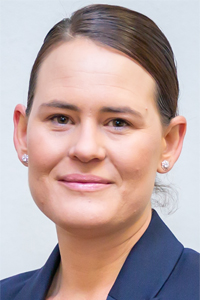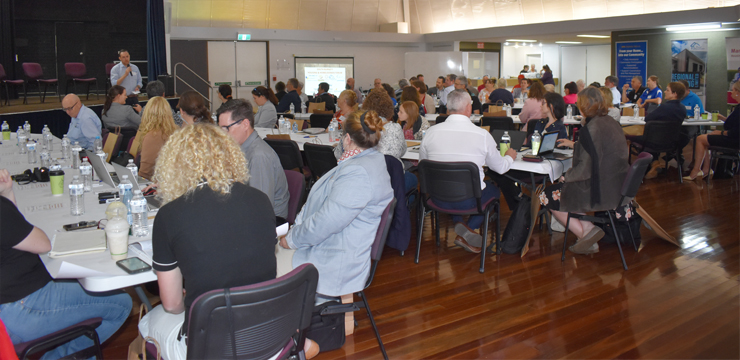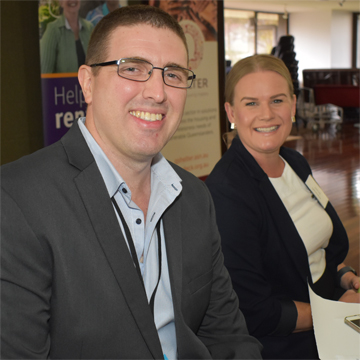
October 19, 2022
A South Burnett Local Housing Action Plan will be drafted in the wake of the South Burnett Housing and Homelessness Forum held in Nanango earlier this month.
About 80 people, including local residents and representatives from Council, welfare and housing agencies, real estate agencies and builders gathered at the Nanango Cultural Centre for the all-day forum to discuss the housing crisis in the region.
It was emphasised at the start it was not an opportunity to “have a whinge, point a finger or to political grandstand”.
Rather, the aim was for everyone to work together to try to get a positive outcome.
The discussion was organised by the South Burnett Housing and Homelessness Working Group, which consists of representatives from South Burnett CTC, the South Burnett Regional Council, QShelter and Regional Housing Ltd.
Ideas to develop localised responses in the short-term, medium-term and long-term (five years) were collected after a wide-ranging discussion about the current situation.
Matthew Kenny, from South Burnett CTC, said the working group would now collate the feedback to be included in the action plan.
This would help link local priorities with the State Government to get funding and action.
He warned that the forum was just the beginning of any locally led response to the crisis, but every little action that could be taken would count.

* * *
Statistics shared by CTC’s chief operating officer Jason Erbacher described the complex situation in the South Burnett – ranging from the 19-year-old couch-surfing at friends’ houses to the skilled professional who cannot find rental accommodation within a reasonable distance of their work.
According to the 2020-21 Census, there were 14,695 dwellings in the South Burnett region but only 86 per cent of them were occupied.
“We don’t know what makes up the unoccupied dwellings, there could be good reasons for it or it could be a contributor to our housing shortage,” Jason said.
“We are experiencing an extremely low vacancy rate, 0.3 per cent, up 0.1 per cent from last quarter.”
A healthy vacancy rate was somewhere between 2.6 and 3.5 per cent.
Jason said 60 per cent of the South Burnett’s population was considered to be in the most disadvantaged category with another 25 per cent in the disadvantaged category. As 85 per cent of the region’s population was low-income, they were among some of the hardest hit by the housing crisis.
“According to the real estate website Domain, rent increases in our region have been, on average, 29 per cent – ie. around Kingaroy, Murgon, Nanango and Wondai – since 2020.
“So not only do local income earners face inflated prices in the rental market and high cost of living pressures, they also face the really real risk of not being able to put a roof over their heads.
“We know that in the last 12 months to June, 174 people have accessed support to find accommodation through a homelessness provider in the South Burnett. And that’s only the ones that we know of.
“Seventy-eight (people) needed immediate support accommodation: 22 per cent were adult men, 20 per cent were families, 19 per cent young men, 15 per cent young women, 9 per cent adult women; 12 per cent were Aboriginal or Torres Strait Islanders, and 3 per cent were young families.”
He said this data had been captured by services linked to the Queensland homelessness information platform.
“But how many people accessed help from services that didn’t know how to report this information? And how many people wanted to reach out for help but didn’t know how and had support by other means like family or a good samaritan in the community?” Jason said.
Jason said what was happening in the South Burnett was not unique in Australia but it was real.
He said some the examples his colleagues have reported include:
- People living on $30 a week because the rest of their income goes on rent,
- Dual-income families with young children sleeping in cars,
- Retirees who have never had to seek assistance before in their lives are sleeping in tents and free camping areas,
- Women escaping domestic violence only to be told at best the only option they have is a street swag and a hope that it is safe at night.
“That is the confronting reality that we are seeing throughout our region.”
* * *

(Photo: SBRC)
Guest speaker Cr Kirstie Schumacher said population growth was a factor in the current crisis.
“Our population has increased by around 400 people since 2019 … we have not seen population growth like this since the construction of Tarong North power station in the early 2000s,” she said.
Cr Schumacher said Council was aware there were many people living in unapproved dwellings, sheds, tents and caravans on top of the more than 180 thought to be homeless.
“We have experienced an increase in community complaints received about these, and simply do not have the resources to respond or the support services available to help find residents better options. We know that we have to do something about this and hold hope that by working together perhaps we can,” she said.
“We also have growing workforces to house and know we need to find homes for professionals that we need living in our region to support our hospital and our major industries.”
Cr Schumacher said Council’s planning and building team had a huge task, and was understaffed
“Ordinarily between the years 2015-2020 our council averaged around 490 building applications a year,” she said. “In 2021, we saw this increase to 772 building applications and in 2022, the stats remained strong with a further 698.
“From July 2021 to June 2022 Council approved 197 Class 1 dwellings and 33 applications for dwelling relocations, which are likely to be removal homes into the region. Our Council is actively encouraging residents to consider the option of a removal home and have discounted the bond paid to Council by 50 per cent.”
She said attempts to recruit more staff had failed because of the increased demand from councils across the State.
“Local builders say the uplift in the construction of homes has been intense and with the pressures around supply of materials and costs, many fear it is only going to get worse,” Cr Schumacher said.
She said Council could not do the “sudden heavy lifting alone”.
“We are seeking genuine collaboration with all levels of government, industry, businesses, community organisations and agencies to achieve the best possible outcomes for our residents and to embrace the opportunity for growth and make it sustainable,” she said.
* * *
Other guest speakers included Jackson Hills (QShelter), Kirsten Firman (CTC), Peter O’May (SBRC) and James O’Brien (Department of Communities) who took part in a panel discussion from the stage.
Ideas were collected from each table for further discussion.
The forum was supported by QShelter and Stanwell Corporation.

|
|
|



* * *
The State Government’s Housing Summit, which also aims to explore the multiple issues around the housing crisis, is being held this week (October 20).
The results will be shared with National Cabinet which is examining housing pressures Australia-wide.
The State Government has blamed massive population growth, supply chain and workforce restraints and multiple weather events for the current housing challenges in Queensland.
According to the Property Council of Australia, Queensland’s population grew by almost 750,000 people between 2011 and 2021, with close to 90 per cent choosing to live in the south-east corner.
Housing Minister Leeanne Enoch has admitted this unexpectedly large population growth had outpaced the delivery of new land, putting unprecedented pressure on the private rental market and affecting demand for social housing.
The State Government is also exploring the affect the expansion of short-stay accommodation options, such as Airbnb, is having on the rental market.
- Related article: State To Probe Short Rentals

























